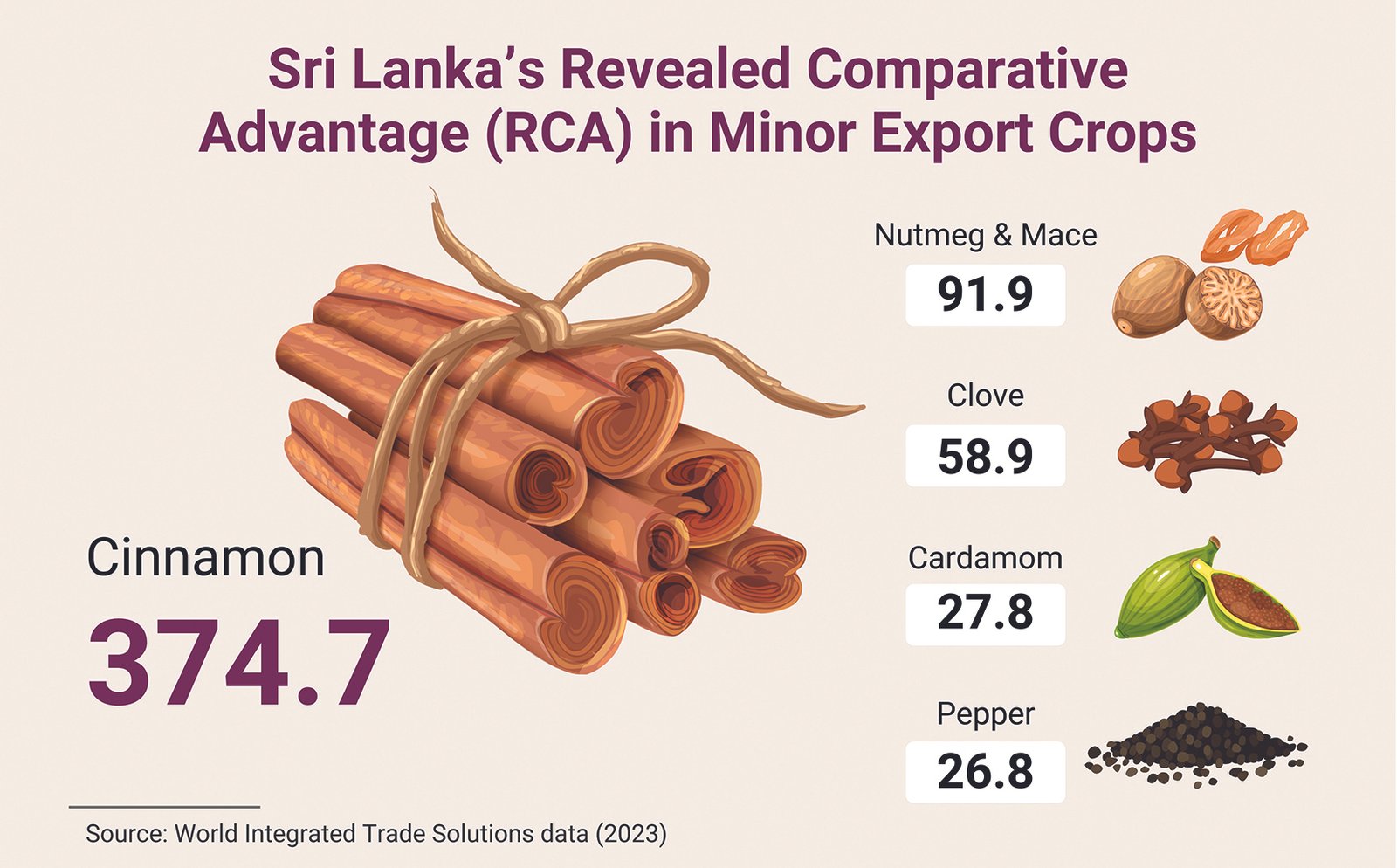
ECONOMYNEXT — Sri Lanka’s goods and services exports accounted for nearly 20.4 percent of GDP in 2023, with manufacturing exports contributing 14 percent, the Institute of Policy Studies (IPS) said, noting however that the country’s export economy remains heavily concentrated around industrial goods, particularly apparel.
IPS said in a statement that industrial goods—primarily apparel—make up 77 percent of export income, while agricultural exports contribute just 22 percent. This lack of diversification has left Sri Lanka vulnerable, with its economy highly dependent on apparel and traditional agricultural sectors like tea and rubber, the institute said.
These vulnerabilities, exacerbated by recent economic challenges, raise the critical question of whether reforms in trade, energy, and agriculture can provide the boost needed for recovery, IPS said citing talking points raised at a recent event organised by institute to launch its State of the Economy 2024 report.
At the discussion, IPS Research Fellow Asanka Wijesinghe highlighted the potential benefits of Sri Lanka joining the Regional Comprehensive Economic Partnership (RCEP).
“Sri Lanka has the potential to shift its focus toward more complex products, such as electronics,” he said.
According to Wijesinghe, joining the RCEP could pave the way for an export-led economy by gradually phasing out tariffs and opening doors to lucrative regional markets.
“Although widening trade deficit with RCEP member countries is a valid short-term concern, RCEP provides important economic benefits such as increased exports, joining regional manufacturing value chains, and generating public goods like efficient custom procedures. For example, a Sri Lanka-China trade partnership could raise exports to China by 42 percent, while a free trade agreement with Indonesia could see an 85 percent rise in Sri Lanka’s exports to Indonesia, contingent upon the full liberalisation of 155 identified offensive products.”
A change in the current incentive structure for domestic production could reallocate domestic resources toward export-oriented goods, said Wijesinghe. However, there can also be impacts on the domestic labour market. Simulations to gauge the labour market impact of tariff liberalisation with the RCEP suggest domestic employment in carpentry, consumer electronics, and motor vehicle parts will be vulnerable to import competition from large exporters like China. To mitigate these effects, Wijesinghe suggested that Sri Lanka’s accession to RCEP be coupled with trade adjustment packages, mirroring successful models from the EU. He also discussed the need for a forward-thinking industrial policy that targets complex products capable of generating high-quality jobs for tariff concessions under RCEP.
Energy pricing and export competitiveness also came up for discussion at the event. Fossil fuel subsidies (FFS) and electricity tariff reforms aim to ease Sri Lanka’s fiscal burden and align with emission reduction targets, IPS Research Fellow Erandathie Pathiraja said, discussing the effects of rising energy costs on Sri Lanka’s export sectors, particularly apparel and tea.
The comparative advantage of Sri Lanka’s apparel sector is vulnerable to regional competitiveness, especially the low-cost producers and trade conditions, while the tea sector is mainly vulnerable to climatic conditions and domestic policies, she said.
“Textiles account for the largest share of costs in the apparel sector, followed by utilities. Given this context, the average share of electricity costs has increased from 3.38 percent in 2019 to 5.58 percent in 2023, resulting in a 2.2 percent rise in overall costs and shrinking profit margins. As Sri Lanka competes with other countries to attract investments and orders, its position is becoming less competitive due to rising electricity prices. Similarly, in the tea industry, the average cost share of electricity has risen from 10 percent to 13 percent, representing a nearly 3 percent rise in costs that shrinks profit margins.
“While the main export industries in Sri Lanka are primarily labour-intensive rather than energy-intensive, with comparatively low energy cost shares, they are still impacted by price shocks that affect short-term profits to some extent”, said Pathiraja, noting how the export sector is heavily reliant on the labour-intensive apparel sector and traditional plantation crops.
Energy-related policies should be complemented with assistance schemes to help relevant industries adapt to the new policy environment, IPS said in its statement.
“For instance, to compensate for short-term losses, it is recommended to provide technical and financial support for renewable energy installations, small grant programmes, and temporary tax relief for vulnerable industries. Additionally, the literature on cross-country ex-post analyses of FFS reforms underscore the importance of addressing associated political economy issues for successful implementation. Price reforms should also be accompanied by institutional, informational, and complementary reforms to ensure a comprehensive approach to policy adaptation.”
IPS further said that, with growing global recognition for their unique quality and taste profile, Sri Lankan minor export crops have the potential to transform the economy while providing farmers with sustainable livelihoods. IPS Research Economist Dilani Hirimuthugodage called for investment and policy support to unlock this potential, noting that the agriculture sector has fallen within the overall economy over the past years.
“Structural weaknesses amplify the effects of short-term crises, which can worsen the underlying problems,” Hirimuthugodage said, also calling for increased investment to address immediate and long-term challenges.
Hirimuthugodage recommended diversifying beyond traditional major export crops to support minor export crop sectors:
“Optimising existing investments by reallocating resources to emerging priorities is key,” she said, adding that dismantling barriers to agricultural exports is necessary to unlock untapped global market potential.
“Sri Lanka has a strong comparative advantage in certain crops—Ceylon cinnamon, with a Revealed Comparative Advantage (RCA) of 375, followed by Ceylon tea at 295 and coconut at 241. Black tea holds an untapped potential of USD 550 million, and cinnamon offers an opportunity of USD 105 million, with key potential markets including the United States, India, and Vietnam.”
Hirimuthugodage proposed enhancing farm productivity, improving fertiliser use efficiency and elevating product quality through a Geographical Indication (GI) certification system. She also called for promoting the ‘Ceylon’ brand, similar to the ‘Made in Sri Lanka’ brand, strengthening value chains via the ‘Geo Goviya’ database while fostering public-private-producer partnerships.
IPS said that participants at the discussion had highlighted how Sri Lanka’s agricultural export performance, particularly cinnamon, lags behind competitors like Mexico. Hirimuthugodage also called for local and foreign investments to move up the value chain and secure higher margins.
“Strengthening regulatory measures is crucial for Sri Lanka’s economic stability, as poorly implemented policies have historically disrupted key sectors like trade, energy and agriculture. By focusing on sound regulations in energy pricing, trade liberalisation, and export diversification, Sri Lanka can enhance its global competitiveness and achieve long-term economic resilience,” the institute said. (Colombo/Oct22/2024)
